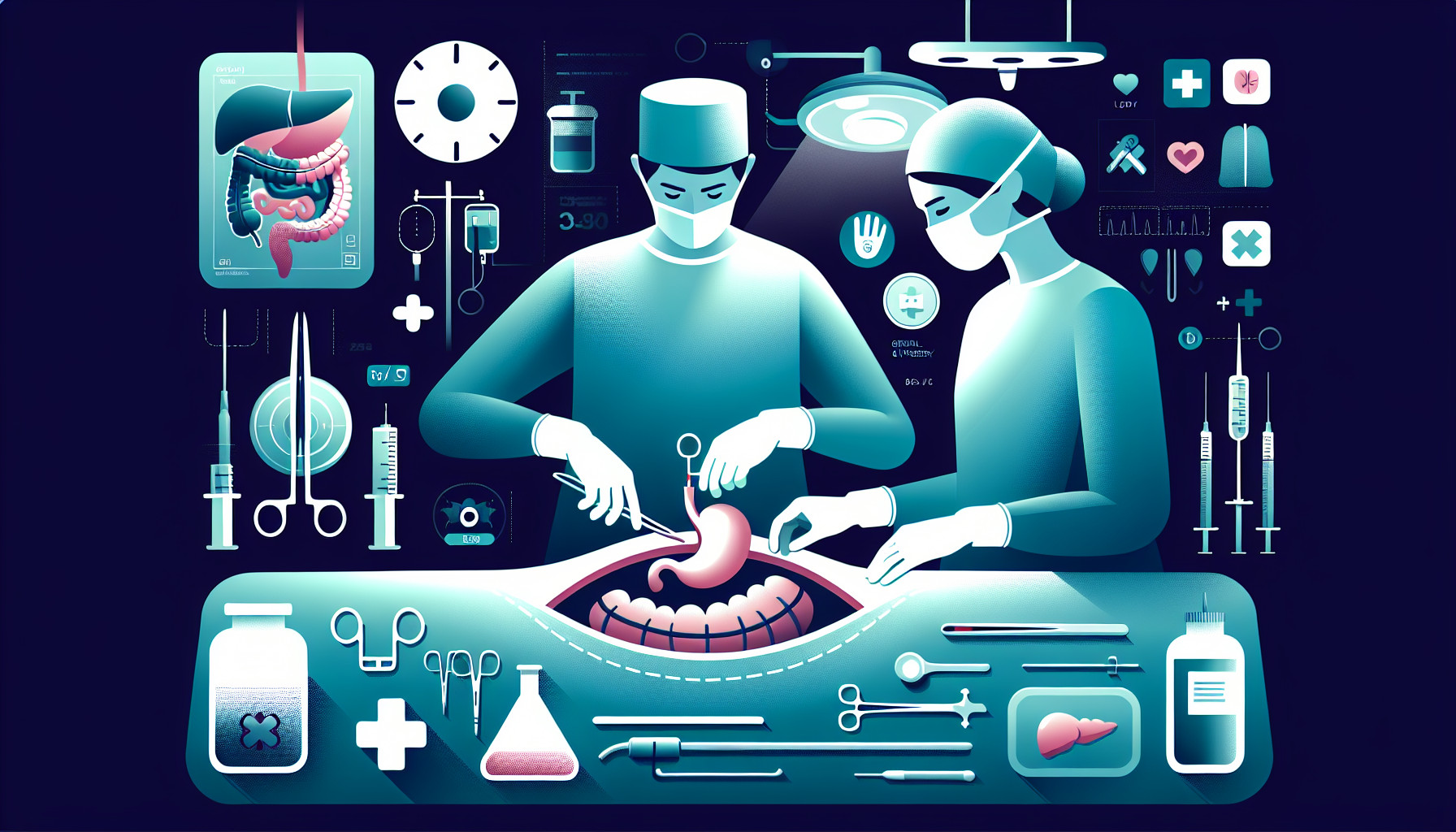Our Summary
This research analyzes different surgical procedures for treating distal gastric cancer, a type of stomach cancer that develops in the lower part of the stomach. The two procedures examined are distal subtotal gastrectomy (partial removal of the stomach) and gastrectomy with D2 lymphadenectomy (complete removal of the stomach along with some lymph nodes).
The researchers looked at previous randomized controlled trials (RCTs). These are studies where people are randomly assigned to different groups to compare different treatments or other interventions.
They found seven relevant studies, which included a total of 1463 surgeries. In these surgeries, 805 patients had a partial removal of their stomach and 658 had their entire stomach removed.
The results showed that patients who had their entire stomach removed had a higher risk of dying after surgery (6.5% death rate) compared to those who had part of their stomach removed (2.6% death rate). Complications after surgery were also more common in the group that had their entire stomach removed (28% experienced complications) compared to the partial removal group (14% experienced complications).
However, when it comes to surviving for five years after surgery, there was no significant difference between the two groups.
The researchers concluded that the decision between these two types of surgery for distal gastric cancer patients is not clearly guided by the evidence. More research is needed to determine the best approach, especially considering the higher risk of death and complications with complete stomach removal.
FAQs
- What are the two surgical procedures examined in the research for treating distal gastric cancer?
- What were the results of the research in terms of death rates and complications after surgery for the two types of procedures?
- What conclusions did the researchers draw about the best approach to surgery for distal gastric cancer based on the available evidence?
Doctor’s Tip
A doctor might tell a patient undergoing a gastrectomy to carefully consider the risks and benefits of both partial and complete stomach removal. They may recommend discussing the options with the surgical team to make an informed decision based on individual factors such as overall health, cancer stage, and personal preferences. Additionally, the doctor may advise the patient to closely follow all post-operative care instructions to optimize recovery and minimize complications.
Suitable For
Patients who are typically recommended for gastrectomy are those with distal gastric cancer that has not spread beyond the lower part of the stomach. The decision between partial removal (subtotal gastrectomy) and complete removal (gastrectomy with D2 lymphadenectomy) depends on factors such as the extent of the cancer, the patient’s overall health, and the risks and benefits of each procedure.
Patients who are younger, in good health, and have early-stage cancer may be considered for partial removal of the stomach to preserve as much stomach function as possible. On the other hand, patients with more advanced cancer or other health issues may benefit from complete removal of the stomach to ensure that all cancerous tissue is removed.
Ultimately, the decision to recommend gastrectomy for a patient with distal gastric cancer should be made on a case-by-case basis by a multidisciplinary team of healthcare providers, including surgeons, oncologists, and other specialists. Additional research is needed to further refine the recommendations for gastrectomy in this patient population.
Timeline
Before gastrectomy:
- Patient is diagnosed with distal gastric cancer.
- Patient undergoes various tests and evaluations to determine the stage and extent of the cancer.
- Patient discusses treatment options with their healthcare team, including the possibility of gastrectomy.
- Patient prepares for surgery by following pre-operative instructions, such as fasting and medication adjustments.
After gastrectomy:
- Patient undergoes the gastrectomy procedure, either partial or complete removal of the stomach.
- Patient stays in the hospital for a few days to recover from surgery and monitor for any complications.
- Patient may experience side effects such as pain, nausea, and changes in diet and digestion.
- Patient is discharged from the hospital and continues to recover at home.
- Patient may need to make long-term dietary and lifestyle changes to adjust to life without a stomach.
- Patient undergoes follow-up appointments and monitoring to check for recurrence of cancer or other complications.
What to Ask Your Doctor
Some questions a patient should ask their doctor about gastrectomy for distal gastric cancer include:
- What are the potential risks and benefits of partial removal of the stomach (distal subtotal gastrectomy) versus complete removal of the stomach (gastrectomy with D2 lymphadenectomy)?
- How will each type of surgery impact my quality of life, including eating habits and nutritional needs?
- What are the potential long-term effects of each type of surgery on my overall health and well-being?
- How likely am I to experience complications during or after surgery with each procedure?
- What is the expected recovery time and follow-up care for each type of surgery?
- Are there any alternative treatment options for my condition that I should consider?
- How will each type of surgery impact my risk of cancer recurrence or progression in the future?
- What are the qualifications and experience of the surgical team that will be performing the procedure?
- What support services are available to me before, during, and after surgery to help me cope with the physical and emotional challenges of gastrectomy?
- Are there any clinical trials or research studies that I may be eligible to participate in to help advance the understanding and treatment of distal gastric cancer?
Reference
Authors: Panin SI, Postolov MP, Kovalenko NV, Beburishvili AG, Fedorov AV, Bykov AV. Journal: Khirurgiia (Mosk). 2020;(11):93-100. doi: 10.17116/hirurgia202011193. PMID: 33210514
